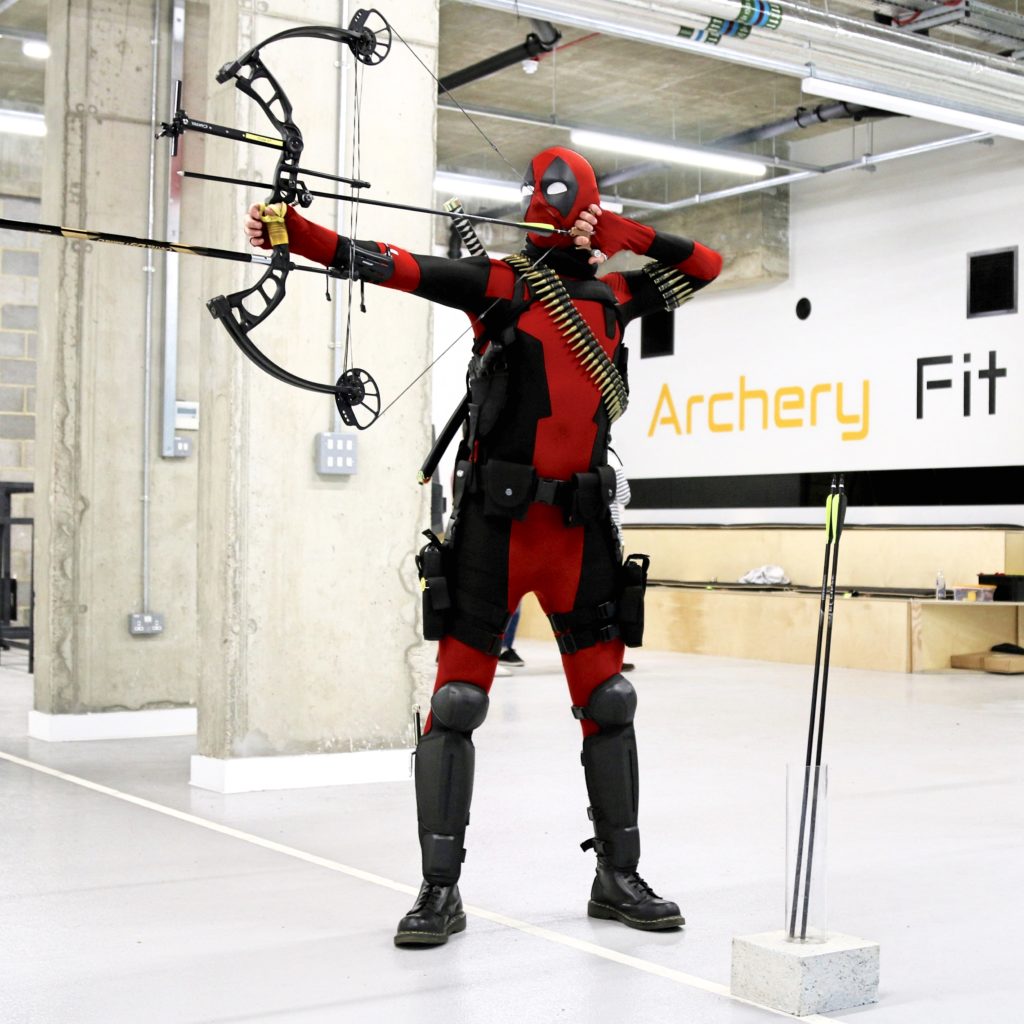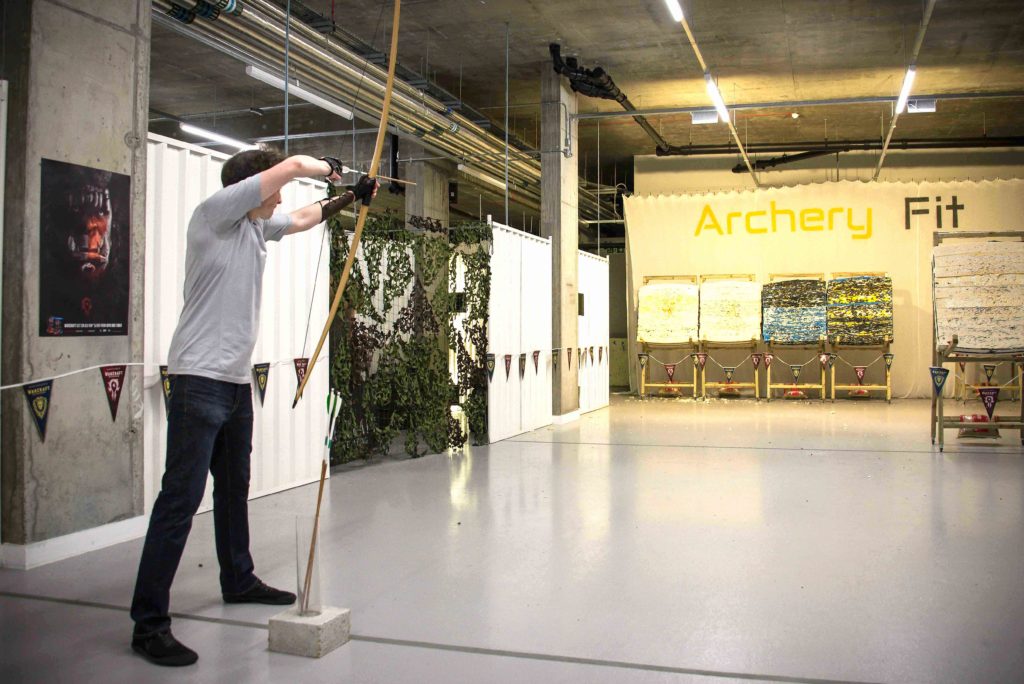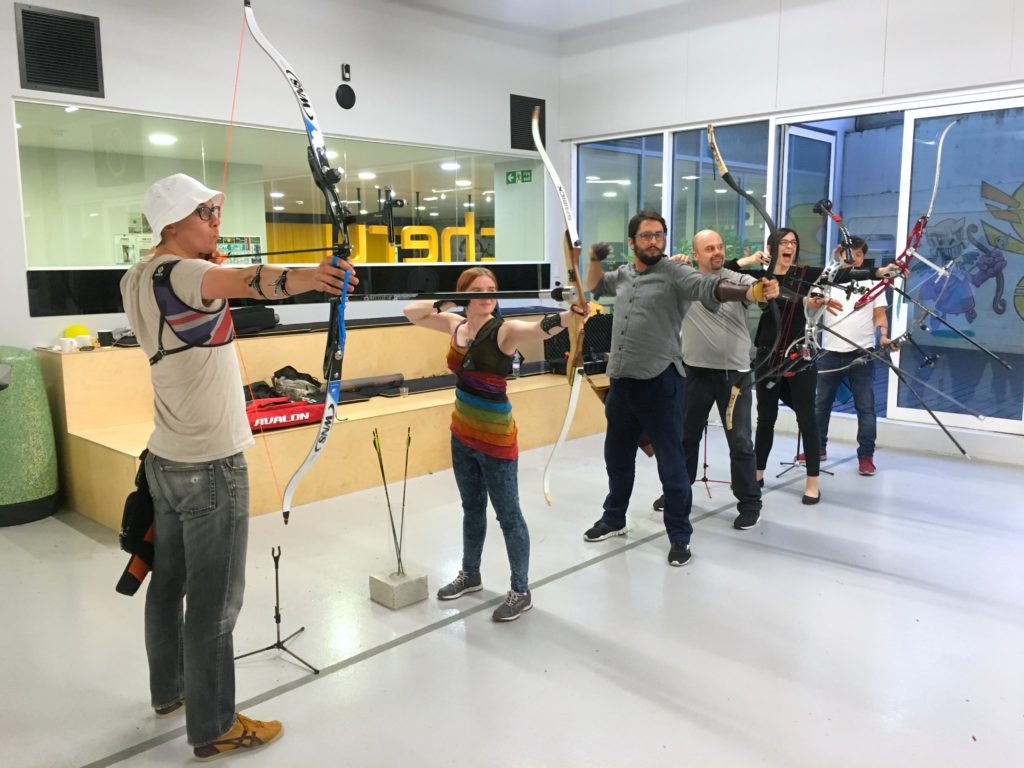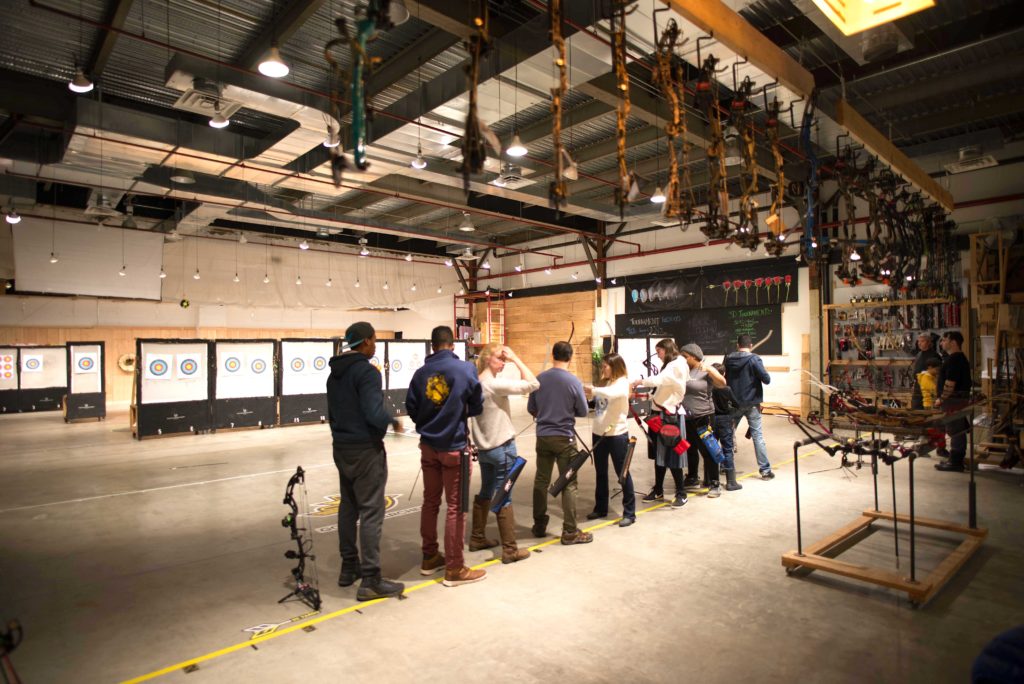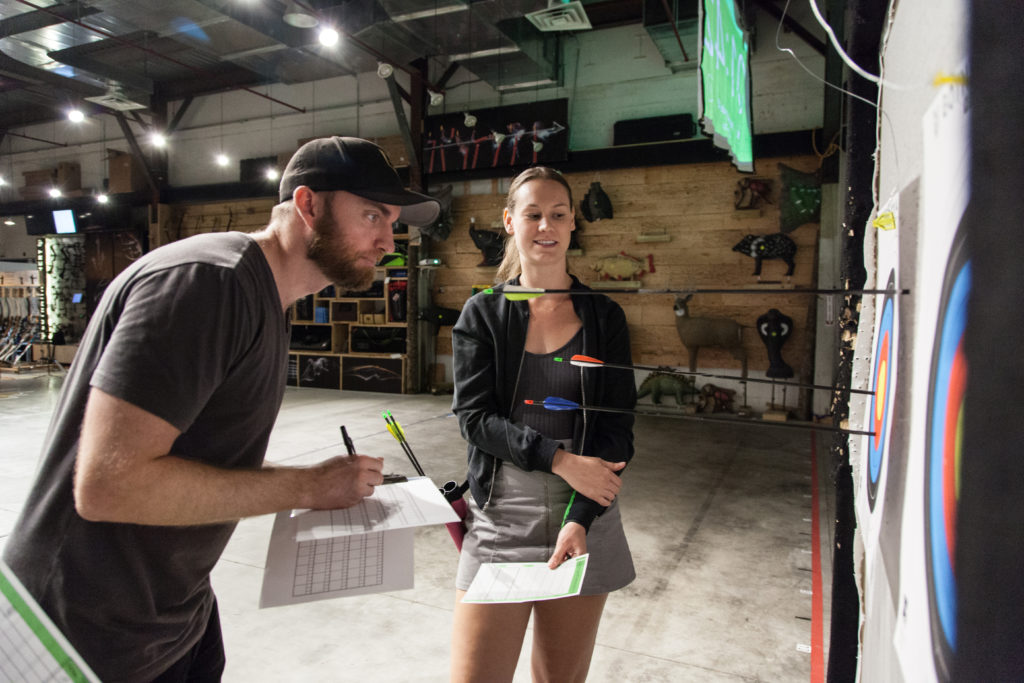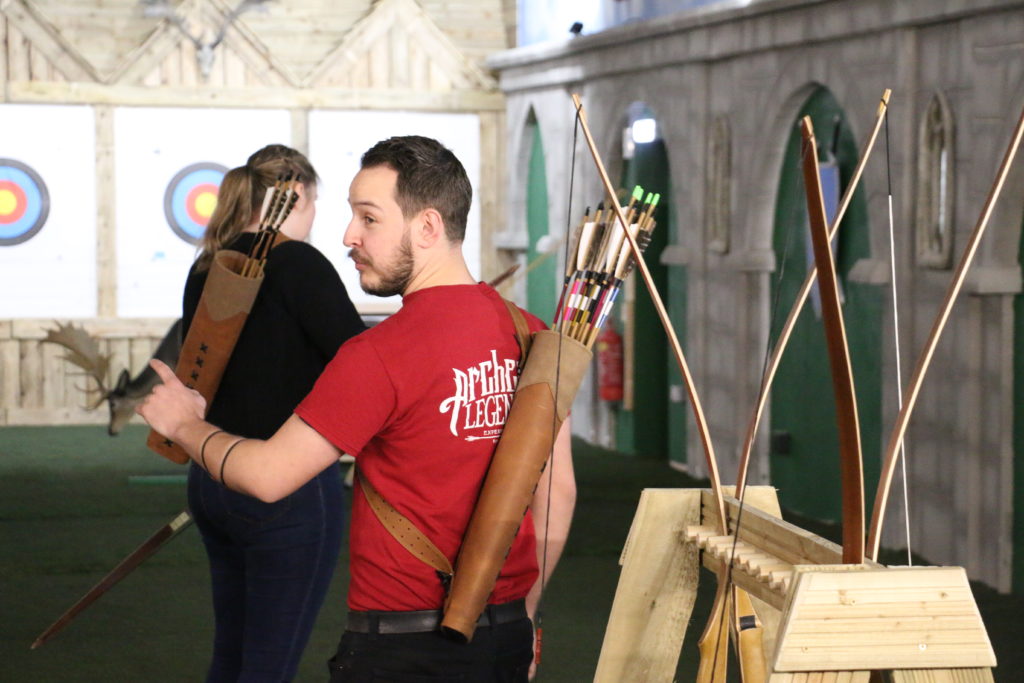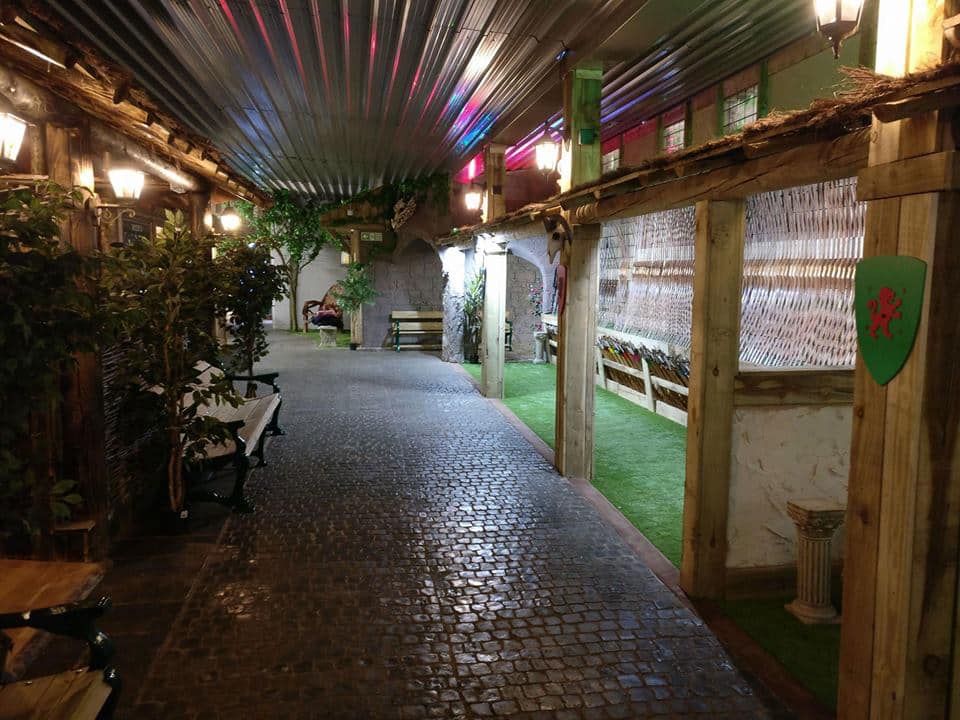For as long as anyone can remember, archery has been based around clubs; and they remain the cauldron of most people’s archery experience, barring the usual first-try suspects of summer camps and fairgrounds.
Archery clubs vary wildly across the UK and the world. There are near semi-pro outfits with first-class indoor and outdoor facilities producing top level national shooters; nearby, you might have a handful of people plinking away of a Sunday afternoon in a council field, with a few bosses in a metal shed – and pretty much everything in between.
In the UK at least, beginning and developing archery is essentially a ‘postcode lottery’. Whether you continue to develop in the sport is usually down to specific people, and volunteers at that. Many clubs restrict shooting to a handful of specific evenings or mornings, using shared facilities – again, with exceptions both indoor and outdoor. A further element of clubs is that, by definition, you have to join, and follow the established traditions and rules, which does not suit everyone.
If you’re reading this, you are likely well aware that developing into a great archer is a long, slow, and demanding process. Archery is occasionally compared to learning a martial art (and indeed it is a martial art, at least technically speaking). But we also live in an era where the rising profile of archery in popular culture in the last ten years, held up with the tentpoles of three fully-televised Olympic Games, has led to an explosion of casual interest in the target side of the sport, and a corresponding demand to try it.
There have been fully commercial ranges for many years around the world, and in the UK at least, several of the ranges attached to the larger archery dealers fit that definition, in the sense you can turn up and pay to shoot. For this issue we are going to look at three of the newer commercial ranges: Archery Fit in London, Gotham Archery in New York, and Archery Legends, attached to Merlin in Loughborough. All three are doing something different in their respective locations (or ‘markets’, if you like), but perhaps more importantly, all are doing something that traditional clubs simply do not do.
Archery Fit
When Archery Fit opened in 2015, the first fully commercial range in the UK, it seemed an anomaly in London or anywhere else. Ever since then, it has become an increasingly important and vibrant part of the British archery scene, down to the tireless efforts of Kate and Roman, the two transplanted Russians who set up the business in the basement complex of a Greenwich residential development. The space is split into an open range for shooting and a range for coaching, open twelve hours a day on weekdays. It also offers for its members something no other London club offers: bow storage.
In 2018, it was recognised by ArcheryGB as the Community Club of the Year, as well as winning two business awards. 2018 saw their third birthday. “We’ve now been open for three and a half years, since April 2015. We had very few guests coming in the first months, with no-one at all on some days. Today we have an average of 50 individuals and four coached classes, every day, seven days a week, and we’re still growing.” said Kate.
What has changed in that time? “The main change is an increase in the number of people shooting in the club! We started with some basic guidelines and general ideas of our training programs, marketing goals and staff development. Some of them have proved inefficient. Since then we have developed a bundle of comprehensive manuals, programs and policies covering most aspects of our performance, and allowing us to deliver best results consistently. There’s something that hasn’t changed though – it’s our attitude. We were not launching ‘just a business, we were creating a place that could beat along with our hearts. It has always been the one.”
Kate, a former Russian national champion, is the head coach and has trained up a series of coaches to work alongside her, teaching all bowstyles. The club prides itself on catering for everybody: the couples on dates looking for something fun of an evening, and the serious archers looking to take the sport as far as it can go.
Is the ‘club model’ of learning archery still relevant? “The answer depends on the goals you want to achieve. We feel that current ‘club model’ has remained unchanged for many years, i.e. university clubs have helped nurture mostly sportspersons, thus supporting the performance side of archery, and general amateur clubs have brought together recreational archers, thus making a better local community. Is this model good for the purpose? Certainly, and we don’t think it can change or should stop. But is it ideal for the development of archery? Not entirely.”
“The business model of archery that we’ve built aims to achieve the kinds of goals that the club model has not much interest in. Our model is the most efficient way to promote the sport. Archery Fit have introduced more people to archery since we started than any other archery club in the same period. Raising awareness of the sport is our superpower. Secondly, we have created an opportunity for any person (at least in London) to train as much as they need. We have a dedicated venue, and are open seven days a week, morning till late. Can this help raise a professional sportsperson also adding to the performance side of archery? In the long run, yes. Archery Fit team already holds a dozen records in the County of London. This is the third year we have taken our members to the National Indoor Championship, a team of almost 30 archers, and some of them are in the top 30.”
She regards the job as not finished yet. “Our biggest success is yet ahead. But we are celebrating being home for a friendly community of regular club archers, growing bigger and bigger. We were announced Young Entrepreneurs of the Year by Greenwich Business Awards and named among the top 100 small businesses by Small Business Saturday. The only real challenge has been and remains – getting through to people out there. Most people don’t think of archery as an entertainment or a hobby, it is not regarded as something accessible or fun. For a wide audience it is still a weird niche sport!”
One of the defining characteristics of regular shooting at Archery Fit is the definite sense of community, carefully nurtured by Kate and Roman, and ultimately reflecting the diversity of the capital. “Most of our regulars falling under the definition of ‘milliennials’, but less than half of our regulars are British, others come from the EU, America, Asia, etc. What really defines our community is its family atmosphere, where everyone is undeniably accepting and welcoming. We’ve managed to bring and bond together people from completely different backgrounds and interests. We simply created the environment which makes archery a bit more appealing. Ultimately it is our goal to officially become the world’s number one archery club.”
Gotham Archery
Bow visited Gotham Archery in New York City, nestled away on a quiet street in Brooklyn, in December of last year. The former industrial space has been converted into a range and pro shop for archery, with a well-established sideline in axe and knife throwing. Before that, one of the world’s major cities only had a handful of places to shoot indoors in the outer boroughs, and still now, finding outdoor shooting spaces in one of the most densely populated cities in the West involves a long journey out of town.
Gotham were keen to point out that they aren’t a club as such, in the sense that you can’t be a monthly or yearly member. Nevertheless, they cater for casual and experienced archers alike, and have picked up a great deal of positive press, having put a lot of effort into their branding and making archery – whisper it – fashionable?
“We aren’t a club, so it is difficult for us to speak about the club model’ or its viability. We were established on day one as a for-profit business.” said owner Chris Stein. “We have very high overhead running an archery range in one of the worlds most expensive and litigious cities. We don’t want to present our new customers with the barriers often associated with traditional club models, and we try to be as open and welcoming to whoever comes through the door. People of all ages, genders, with or without disabilities, people from all different backgrounds experience archery at our range and these people bond over the sport. So it’s not necessarily over. We are just pursuing an alternate model.”
Gotham has been successful in its mission since it opened in 2014, and has recently expanded, adding another range in Manhattan. “We wanted to serve more people than we could accommodate in our Brooklyn range. From day one we always wanted to expand beyond one range. What better place to go to than Manhattan, so we can offer better access to the sport to a larger variety of people. It took us one year and looking at over 100 potential places before finding the right spot.”
“A lot of things have changed since we started in June of 2014. We started out wanting to create a large, modern and inviting space for archers of all skill levels with enough staff to constantly be able to assist multiple customers at once. Since opening we have had tens of thousands of customers. Th is growth challenged us to continuously improve and expand our offering and our space. We try to anticipate our customers needs and give them the best experience possible. We offer more flexible hours, work with a large number of suppliers to make sure our customers can get whatever suits their needs. We have a large JOAD program, host tournaments and 3D archery events plus much more.”
“There is no business model for this business, it’s really all challenging. Opening any kind of business in New York City is very difficult, making it sustainable even more so. We appreciate the loyalty and dedication of our customers, for helping us achieve the success we do have.”
What have been your biggest successes? “We have benefitted tremendously from having a handful of dedicated and passionate customers who really want us to succeed and who became ambassadors for Gotham Archery and close friends. We have loyal regulars who come to the range while being on call as brain surgeons, shooting next to people who may be city employees, artists, lawyers, UN personnel, you name it. Some of our customers come to relax, some come because they take this sport very seriously and are training for competitions. All share the passion and love for archery. Many became part of a circle of friends who met at the range. We often see family members, friends, co-workers introducing each other to the sport and bringing them out to our range.”
Do people who come to the club have realistic expectations around archery? “A lot of our customers are looking for something new to try on a weekend or they just saw the Robin Hood movie or Hunger Games and want to try archery for themselves. Often they are surprised to be able to do this in a dense, urban setting. Many customers came to spend a fun couple of hours shooting a bow at five yards. They observe other customers using more advanced equipment at 18 meters which motivates and exposes them to the aspirational nature of this sport. We take pride in the path which we have laid out for these customers.”
How do you turn people into devotees of the sport? “With good communication and enthusiastic instructors and staff members. We really do like what we do, so we love to talk about archery, give tips, exchange experiences, and sometimes go for a beer with our customers after work. We are as excited about archery as our customers are. Many of our archers have come a long way since they started shooting with us, and we believe some of them will go on to win competitions, however small or large they may be. Who knows what’s to come, our archers best scores have not yet been shot. For many regional tournaments we have a group of customers of all ages who will coordinate their participation, share car rides and hotel rooms, and represent Gotham Archery there. This is born out of a passion for the sport and the community. Our long-term plan is to introduce the sport to as many people as possible.”
What would you have done differently, if you did it again? “We would have opened a bowling alley instead. Just kidding.”
Archery Legends
On a different path again is Archery Legends, a facility attached to the well-established retailer Merlin Archery based in Loughborough in the Midlands. Open just six months, it was a long-term project of the founder Chris Jones, who sadly passed away earlier this year.
Archery Legends is not a club as such, it is a facility for leisure shooting that is very much tapping into well-known fantasy archetypes.
Nevertheless, it is also set on introducing people to the sport, with two 18 metre ranges, plus a range dedicated to younger children age 7-11. They shoot purely traditional archery using a flat bow with no sights, essentially offering a continuous introduction to archery available whenever the range is open, and particularly catering for groups.
Bow spoke to Adriana, the manager of Archery Legends. “This is a long term project that Chris and Ben (Jones) wanted to do, to bring archery further into the mainstream. To join an archery club really can be quite a heavy commitment. Here we don’t have membership. We have various kinds of formulated gameplay suitable for a good evening out and group activities and we focus on children in particular. Needless to say we take safety extremely seriously as well. But the focus is on entertainment.” Perhaps uniquely amongst archery ranges, Archery Legends offers food and drink as part of its various packages.
“Essentially, it’s adding a 100% customer service element on to trying out archery. It’s an environment to introduce people to archery in a fun way. We’ve had many customers taking a liking to it, and we get repeat business from both individuals and groups. And it has introduced people to the wider sport – some have gone on to join clubs.”
Archery Legends isn’t about free shooting with your own equipment. “We’ve made sure we have the highest quality equipment available, much better than your average havea- go. But if you have to use our equipment, it adds another element, making archery an equal playing field, which adds something to any competition we put on.”
“We have a loyalty card scheme, and a traditional shooting night on Monday night, where people can come and shoot individually. We’re very familiar with clubs and how they work, what we’re doing is filling a gap in the market, with people who want to shoot and have fun but don’t like the commitment. We want to add a little bit of magic here too, we’re based in a trading park outside the city centre, but you come in here and it’s a different little world.”
THE FUTURE?
Archery is well-known for being a broad church, accommodating a wide variety of styles, traditions, and people. None of the people we spoke to here were keen to see traditional clubs change or die, and all were keen to offer services that sat alongside more traditional models – and with a strong community spirit, too. Most readers will be aware of the spark that ignited their interest in the sport – but it is also necessary to have somewhere to fan that spark into a flame. The commercial clubs that have appeared in the last few years are gradually changing the archery landscape, and ultimately, will change the sport.
Thanks to Roman and Kate, Adriana, and Martin Fuchs for their assistance with this article.


